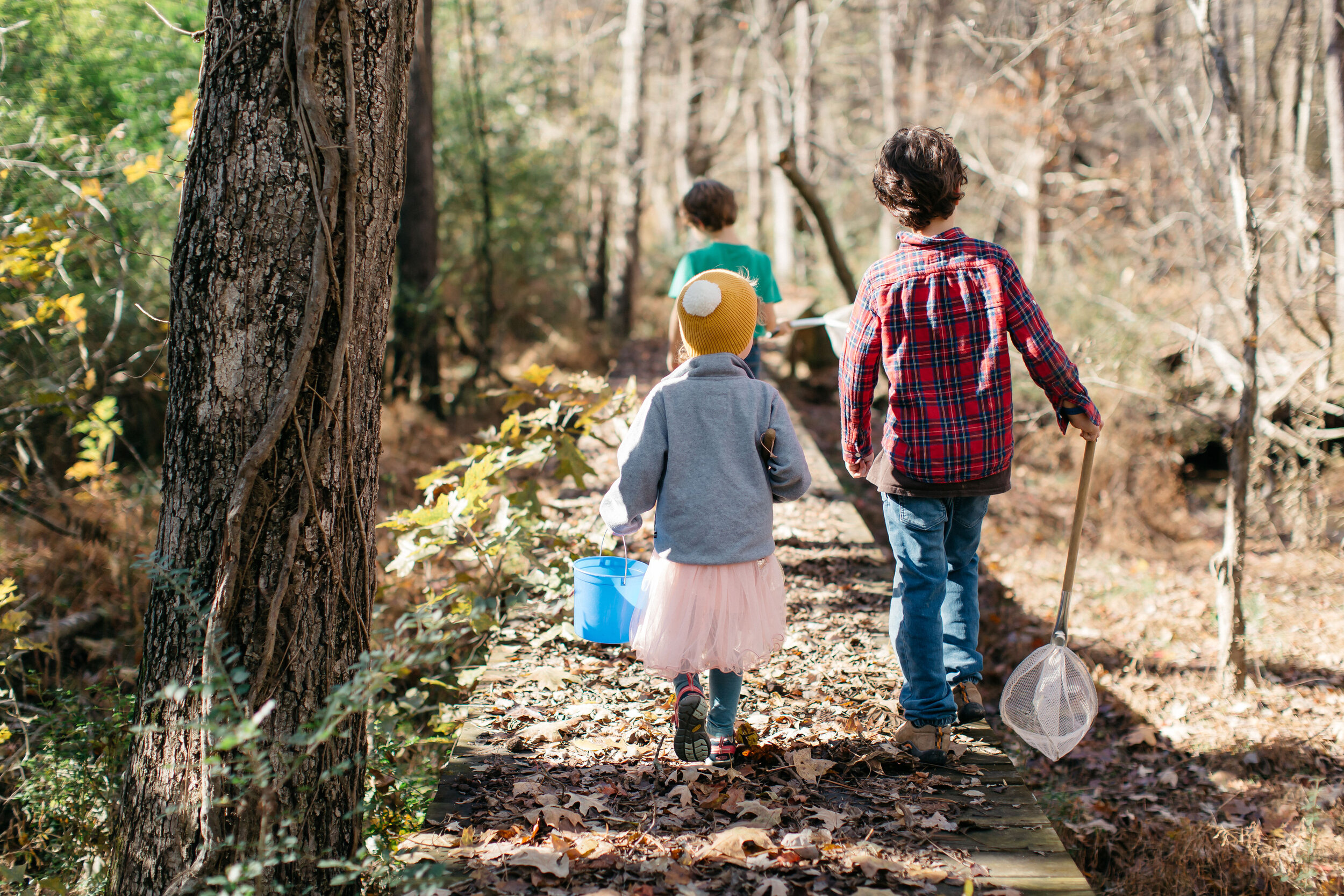
Our classroom is a forest, stream, pond, wetland or meadow.
Literacy and Mathematics outside? Absolutely
Humans are born with an innate desire to understand the world around us. We also happen to integrate what we learn best while moving our bodies and engaging with, rather than simply talking about, concepts.
Literacy
Preschoolers create alphabet books based on experiences in nature. We study found objects, both living and not, that children are curious about. We use observation, drawing, and non-fiction books to help us form hypotheses. It is this integration of science, art and the drive for more information that inspires literacy. David Sobel writes that, “when we introduce language as integrated with song and movement, it weaves its way into [childrens’] bodies and minds in an instinctive, fluid fashion”. We read stories, we tell stories, we use books to help us seek answers to questions. At Longleaf we sing and we move!
Mathematics
Children playing in nature means sorting, measuring, weighing, estimating and counting their way towards deeper mathematical understanding. While we tend to think of mathematics as a cognitive process, the necessary development of foundational understanding tends to get imprinted in our brains from experiencing math in the physical realm. We fill a bucket with water, building an understanding of mass and volume with our bodies, as we first pour, and then lift that bucket. We stretch our arms wide as we struggle to walk across a log and begin to understand equal distribution of weight, balance and symmetry.
Science
In our experience the best teaching moments happen when an adult joins the questioning rather than stepping in to “educate”. If you’ve spent time in nature with young children then you know it often involves plenty of exclamations teeming with curiosity: “What is that? What’s it doing? Why is it that color?” We ask children, “What do you notice? What clues can you find? What do you think?” Children are natural scientists and the complex webs of an ecosystem inspire endless practice with the scientific process: asking questions, making guesses, doing research and maybe finding some answers.
Social Emotional Skills
Children learn how to be socially and emotionally aware and competent through play. In play we practice negotiation skills, taking turns, collaboration, self-regulation and cooperation. Empathy arises when we see a friend feeling sad or we encounter an injured butterfly. Playing freely with others provides countless opportunities to grow these skills, while gentle guidance and modeling from trusted adults can help provide alternate choices when children need them. Growing social-emotional skills with children can also be seen as helping grow a functional community of adults.
Mindfulness
We believe it is crucial to help children experience the feeling of stillness every day, to name it, and to recognize how it settles our bodies and our minds. That is why we build small mindfulness practices into our days, every day. It begins at our morning meeting and continues as we venture out, listening and noticing. Certainly as adults we know the modern pace of life is moving very fast, and also we understand it is essential to practice ways to unplug, slow down, and experience peace and quiet.
Joy
Children are masters at manifesting joy and do not separate learning and joyfulness. At Longleaf, we believe that joy stems from feeling connected to ourselves, to each other and to the world around us. Every child deserves to experience a foundation of joy as they get curious, seek answers and step out of their comfort zones. “From the freedom to explore comes the joy of learning. From knowledge acquired by personal initiative arises the desire for more knowledge. And from mastery of the novel and beautiful world awaiting every child comes self-confidence”. -E.O. WIlson
